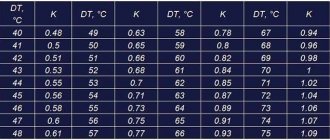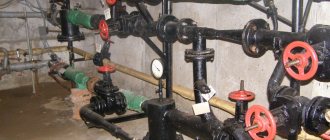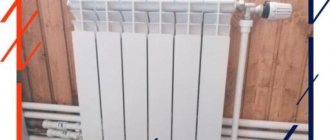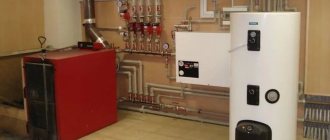Unlike other options for heating a house with electricity, the choice between convectors and an electric boiler is not obvious. It depends not only on the initial parameters of the house, but also on the model of the electric boiler and radiators or electric convectors. A heating system with an electric boiler is more expensive, its installation also requires additional time and money. Standard inexpensive convectors will cost on average 2-3 times cheaper. The theoretical efficiency of both options is approximately 98-99%.
However, the initial cost of organizing heating is only one of the selection criteria. In the article we will look at all the features of using both options, determine what and in what case will be more profitable and efficient, give examples and costs of organizing home heating with an electric boiler and convectors.
Heating the house with an electric boiler
Cases in which heating with an electric boiler is more economical and comfortable are:
- heated area of the house is 100 square meters or more;
- there is an opportunity to purchase an electric boiler in the middle and higher price segment (35-40+ thousand rubles) with advanced automation, the presence or possibility of connecting a room thermostat;
- It is planned to connect a buffer tank to the electric boiler, which will accumulate excess heat.
- Comfort and flexibility of the heating system are a priority.
Compact heating element electric boiler Proterm.
Let's look at each point in more detail.
Firstly , most convectors have a power of 1.5-2 kW and a cost of 2,700-5,000 rubles, this means that for a house with an area of 100 m2 you need 7 convectors of 1.5 kW or 6 of 2 kW (22-25 thousand roubles.).
It is unsafe to connect such a number of convectors through an outlet to a regular power supply, and their total cost is higher than budget electric boilers and almost equal to functional and economical models in the middle price segment. Accordingly, the larger the heated area, the higher the cost of the convector, while the cost of the boiler only barely changes with increasing heating output. But do not forget about the radiator system, if it is not yet organized.
Secondly , standard convectors overheat the air, since their heating elements always operate at full power, turning off when the temperature exceeds the set temperature by 1-2 degrees (it is also worth taking into account the low accuracy of the thermostat. And each additional degree is 3-6% of additional consumption Even the most budget models of electric boilers have at least 3 stages of power adjustment and are able to maintain the set temperature quite accurately and more stably.
The most economical are electric boilers with the presence or possibility of connecting an external room thermostat (issue price is 1-1.5 thousand rubles), for example, the well-known Protherm Skat 9 KR 13 (about 35,000 rubles). In addition to the fact that the operation of the boiler, depending on the room temperature, is more correct and accurate, using a room thermostat you can program operating parameters for the next day or week, for example, reducing the temperature to 15°C during working hours when the owners are not at home.
One of the best models with control via Wi-Fi TEPLOLUX MCS-350 (RUB 5,000-5,500)
Thanks to such operation, colossal savings of thousands of rubles can be achieved. The functionality of a room thermostat is available only in expensive convectors costing from 8-9 thousand rubles.
And thirdly , by increasing the initial costs in order to further recoup, you can supplement the system with a buffer tank - a large tank that accumulates excess heat and subsequently transfers it to the heating system or hot water supply.
The most well-known scheme is the accumulation of as much heat as possible during the nightly (more than 2 times cheaper) electricity tariff, after which the buffer tank will transfer heat to the radiators for another 3-7 hours. A rational scheme is for a large area of the house (especially a frame house), a large reserve of boiler power and the volume of the buffer tank.
It is also worth mentioning that heating system radiators (with the exception of steel panel models with convection fins) do not dry the air in the heated room. However, the installation of an electric boiler with a power of more than 10 kW requires approval from the Energy Supervision authorities.
Efficiency and selection criteria for energy-saving electric heating boilers
Advantages and disadvantages
Let's summarize by comparing the pros and cons of organizing heating with an electric boiler and radiators:
| Advantages | Flaws |
| Greater automation functionality and, as a result, efficiency | Higher initial cost of the boiler and heating system when heating a house up to 100-120 m2). |
| Greater autonomy and stability of the heating system | More complex installation of the boiler itself, organization of piping, installation of radiators |
| Heating system radiators do not “dry the air” | For boilers with a power over 10 kW, a permit is required, as well as 3-phase power and connection via a separate cable |
| At the same time, the issue of hot water supply is resolved | It is recommended to connect to a reliable grounding circuit (similar to grounding a gas boiler); if there is no circuit, this is an additional cost |
| Higher safety, one connection point for the power circuit (as opposed to a group of convectors) | |
| Ease of use: does not take up space in each room, the system has more settings, there is no need to turn on each heating device separately (the temperature in each room can be set using thermostats on the radiators) | |
| Possibility of connecting underfloor heating |
Additional options
Manufacturers equip models with various options for maximum convenient use. The main functionality includes 2 – 4 operating modes. Additional functions may be different, therefore, when choosing an electric convector for a summer house, you should determine which of them will be a priority.
- Frost protection automatically starts the convector if the air temperature drops below 5°. The option will be useful if there is a threat of freezing of the pipeline.
- Automatic shutdown when the floor convector is tipped over - if there are small children or pets in the house, this function will ensure safe operation.
- An electronic programmer will allow you to set the necessary operating parameters. The user will not have to constantly adjust the heating intensity; the electronics will independently change the temperature regime in accordance with the settings.
- Heating indication is not the most useful option, but it will allow you to determine from a distance whether the device is currently working.
- The built-in air ionizer works even when the heating is turned off.
- Splash protection is most useful if the appliance is used in a bathroom, but similar protection can be appropriate in any room, such as a kitchen.
- If several convector heaters are used in the house, you can install a single control module and regulate the operation of all devices simultaneously.
What is the difference between heating a private house with electric convectors?
It is better and more economical to use convectors than an electric boiler in the following cases:
- heated area of a private house is less than 80-90 m2;
- it is planned to purchase expensive models with precise electronic control and the ability to combine devices through a common thermostat or application;
- temporary residence in a house when the lower operating costs of an electric boiler do not pay for the high cost of purchasing and installing the entire system.
The most common misconception is that “convectors are more economical than an electric boiler, because during their operation, thermal energy is immediately transferred to the room (convector → air), while the thermal energy generated by an electric boiler goes through the cycle electric boiler → coolant → CO distribution → radiators → air.”
This is true, but it is worth taking into account the previously described factors: more stable temperature maintenance by the electric boiler, the presence of stepwise or even smooth power adjustment, the ability to work based on data from an external thermostat - all this has a much greater impact on efficiency, the difference is confirmed by practice and reviews from owners.
The exception is cases when budget electric boilers with stepwise power adjustment without external control and good convectors in the high price segment (from 8-9 thousand rubles) are compared.
Proper placement and connection of the convector to the electrical network of the country house.
Pros and cons of convective heaters
Modern heating devices have a number of significant advantages. The main advantage is that after purchase the device is completely ready for use: the user just needs to transport it to their summer cottage and connect it to the power supply.
The range of convectors is wide and varied. Any user will be able to choose a model with suitable functionality and design. Manufacturers pay great attention to the appearance of devices; inexpensive models are usually made in white and have a simple design. There are also premium models, the front panels of which are finished with dark tempered glass or natural stone.
It is important to know! Convector heaters are safe for human health. They are environmentally friendly, do not burn oxygen and do not dry out the air.
The disadvantages of electric convectors are somewhat subjective:
- The need for an outlet near the device. It is acceptable to use an extension cord, but it may be inconvenient.
- The power consumption of the device cannot be called economical. In some models, there are several operating modes, and the thermostat allows you to set the minimum level of energy consumption, but this directly affects the heating intensity.
What is ultimately more economical and efficient: electric boiler or convectors
As mentioned earlier, the choice depends on the area of the private house and the model of electric boiler/convectors.
For a house with an area of 40-80 m2, you can safely choose 2-4 convectors with a power of 2 kW each, the total cost of the solution will be about 5,500-10,000 rubles. + organization of separate wiring for their power supply, because It is simply unsafe to turn on devices of such power for a long time and is fraught with constant overloads.
The minimum costs for organizing heating will cover operating costs that are 5-20% higher for many years to come. With a larger budget, in order to increase efficiency and operating comfort, you can pay attention to the more expensive models Noirot, Electrolux, Ballu or Nobo.
For houses with an area of 80-120 m2, the choice is still not obvious, since the total cost of convectors is already closer to the cost of organizing a heating system with an electric boiler and radiators, and the advantages of good electric boilers are already obvious.
For houses with an area of 120-300 m2 or more, it is better to use an electric boiler. The heating system will be more stable, the savings due to control through an external room thermostat will be extremely noticeable, the connection of a powerful electrical appliance will be carried out at one point, you can easily solve the issue of hot water supply, connect heated floors, rationally use the buffer tank.
How to accurately calculate the required boiler power Individual calculation, formula and correction factors
Convector device
To organize convective exchange, it is necessary to use a convector. This device can operate using both natural and forced circulation. Modern convectors for heating a home can be of different designs, but they are based on three main elements:
- a heat exchanger or heating element that acts as a heat source;
- casing;
- a convection chamber with louvers or valves (it is designed to direct air flow).
Convector device
Additional elements may include devices for adjusting the direction of warm and cold air flows, as well as an automated control system.
Comparative table of the cost of organizing heating
| House area, m2 | Heating method | Manufacturer and model | Total cost, rub. | Price of 1 kW of thermal power, rub. |
| 60 | Electric convectors | Ballu BEC/EZMR-2000 (3 pcs.) | 3 000*3 = 9 000 | 1 500 |
| Electric convectors | REDMOND SkyHeat C4519S (3 pcs.): el. control, connection and programming via app | 9 600*3 = 28 800 | 4 800 | |
| Electric boiler and radiators | Protherm Skat 6 KR 13 + Rifar Base 500 x6 (4 pcs.) + harness | 32 000 + 4 200*4 + 5 000 = 53 800 | 8 966,6 | |
| 100 | Electric convectors | Ballu BEC/EZMR-2000 (6 pcs.) | 3 000*6 = 18 000 | 1 800 |
| Electric boiler and radiators | Protherm Skat 12 KR 13 + Rifar Base 500 x6 (9 pcs.) + harness | 35 000 + 4 200*9 + 6 000 = 78 800 | 7 880 | |
| 150 | Electric convectors | Noirot CNX-4 1500 (10 pcs.) | 6 300*10 = 63 000 | 4 200 |
| Electric boiler and radiators | Vaillant eloBLOCK VE 18 Rifar Base 500 x6 (13 pcs.) | 39 000 + 4 200*13 + 9 000 = 102 600 | 6 840 |
As you can see from the table, the larger the area of the house, the higher the cost of each kW of thermal energy obtained when heating with convectors and the lower when heating with an electric boiler. At the same time, the advantages and efficiency of an electric boiler are obvious.
BoilersHeatersElectric boilers
Attention to the heating element (heating element)
Electric convectors use three types of heating elements:
- needle-shaped;
- tubular with aluminum fins;
- monolithic.
Needle-shaped ones are a thin dielectric plate on which a chrome-nickel heating filament (coated with insulating varnish) is installed, forming loops on both sides of it. They heat up and cool down almost instantly. Convection in devices created “on the basis” of a needle heater is carried out mainly due to the design of the housing.
Due to the fact that the varnished thread is practically not protected from moisture, the use of equipment with such a heating element in wet rooms is strictly not recommended. The main advantage of such devices is undoubtedly their price, but the durability of the equipment is questionable. In general, in practice, needle heating elements in modern electric convectors are used quite rarely; but if during the selection process you come across a unit with such a “filling”, you can safely pass it by.
A tubular heating element (TEN) is a steel tube with a nichrome thread installed in it and filled with a special heat-conducting insulating backfill. Aluminum fins are attached to this tube - it ensures effective heat transfer and enhances convection. A tubular heating element heats up significantly less than a needle element, and is more durable. Many models of units with heating elements are splash-proof and can be successfully used in bathrooms. But, unfortunately, such equipment is not without its drawbacks: due to the difference in thermal expansion of the tube and fins, the operation of the device may be accompanied by sounds resembling crackling.
Convectors with monolithic heating elements are absolutely silent, since the heater body is solid; the ribs are an integral part of it. Such devices operate with minimal heat loss and are very efficient.
We recommend choosing electric convectors with tubular or monolithic (ideal) heating elements.
Gas convector equipment
Before connecting such heating of a country house with convectors, a long preparatory process is required, and this worries many. However, in the future, gas equipment will completely pay for itself, since gas is considered the cheapest fuel available today. Such a system can run on natural gas, so it can only be installed if the house has access to a gas main.
To prevent combustion products from entering the house, a special pipe is provided through which they are discharged. Such a pipe is installed during installation work. It is best if such a pipe is of the coaxial type.
Gas convector heating of a dacha is also characterized by a high level of reliability. Regardless of which heating convectors are better, such equipment can easily be left to work unattended for the whole night. It also has a long service life. Using gas convectors it will be possible to create a reliable and durable heating system.
Gas heating in a wooden house using convectors is slightly more expensive than electric heating, but you need to remember that gas is not as expensive as electricity.
Direct electric heating
Oil radiators
The housings of these devices consist of several sections with mineral oil as a coolant, which is heated by powerful heating elements up to 200 degrees, maintaining the radiator temperature no higher than 100 degrees.
Oil radiators are capable of heating any living space; they do not “burn” oxygen during operation, but they are used only in extreme cases due to the high consumption of electrical power.
Convectors
In these devices, a heating element heated by electric current directly heats the air without an intermediate coolant. Therefore, they have higher heat transfer and efficiency, but at the same time some of the oxygen is burned out of the air in contact with the hot metal of the heater.
With the radiator and convector method, cold air from below the room, after heating, rushes upward and collects near the ceiling, and from there it is distributed throughout the entire volume of the room.
Therefore, when the temperature at the top of the room reaches +22°C, the air near the floor will warm up to +17°C, which is quite acceptable, but not entirely comfortable.
Convectors use temperature sensors with automatic temperature control systems, which can significantly save energy costs.
Attention! The convector located below the window protects the room from the penetration of cold air through cracks from the street, preventing drafts.










